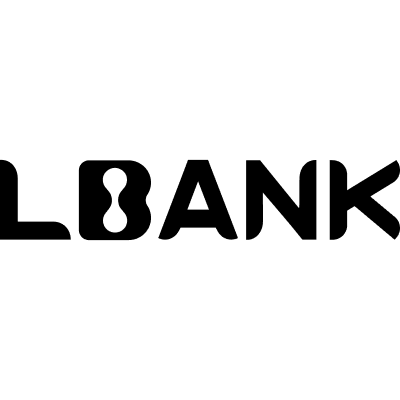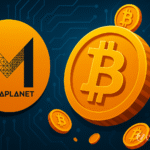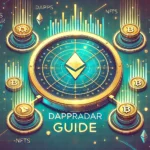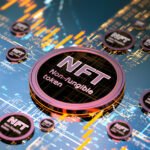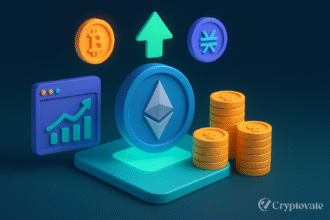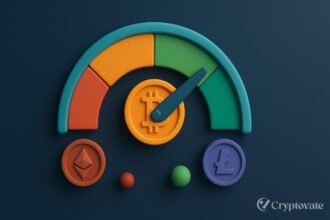– Ad –
| Getting your Trinity Audio player ready... |
Decentralized Finance (DeFi) has revolutionized how we interact with money, offering permissionless access to financial services like borrowing. In 2025, DeFi borrowing is a powerful tool for crypto users, enabling loans without banks or credit checks. This guide explains how DeFi borrowing works, types of crypto loans, top platforms, risks, and tips for safe borrowing. Whether you’re a beginner or a seasoned investor, you’ll learn how to master DeFi borrowing and unlock new financial opportunities.
What Is DeFi Borrowing?
DeFi borrowing allows you to take out crypto loans using decentralized platforms built on blockchains like Ethereum, Solana, or Binance Smart Chain. DeFi borrowing eliminates the need for middlemen, documentation, or credit checks, unlike traditional loans. Instead, smart contracts—self-executing code—manage the process, ensuring transparency and efficiency.
Here’s how it works:
- Collateral: You deposit crypto assets (e.g., ETH, USDC) as collateral to secure the loan.
- Loan Issuance: The platform issues a loan in another crypto asset (e.g., DAI, USDT) based on your collateral’s value.
- Repayment: You repay the loan plus interest to retrieve your collateral. Failure to repay may lead to collateral liquidation.
DeFi borrowing is popular because it’s fast, global, and accessible to anyone with a crypto wallet. To understand the other side of this ecosystem, explore how lenders provide liquidity in our DeFi lending guide.
Types of DeFi Loans
DeFi offers various loan types to suit different needs. Here are the main ones in 2025:
1. Over-Collateralized Loans
- What It Is: The most common DeFi loan type, requiring you to deposit collateral worth more than the loan amount (e.g., $150 in ETH for a $100 DAI loan).
- Why It’s Used: Protects lenders from market volatility. If collateral value drops, it’s liquidated to cover the loan.
- Platforms: Aave, Compound, MakerDAO.
- Pros: Accessible, no credit checks.
- Cons: Risk of liquidation if collateral value falls.
2. Flash Loans
- What It Is: Uncollateralized loans that must be borrowed and repaid within the same blockchain transaction (seconds).
- Why It’s Used: Used for arbitrage, liquidations, or swapping assets instantly.
- Platforms: Aave, Uniswap.
- Pros: No collateral needed.
- Cons: Requires technical expertise; high gas fees.
3. Under-Collateralized Loans (Emerging)
- What It Is: Loans requiring less collateral than the loan amount, often based on reputation or credit scoring systems.
- Why It’s Used: Increases capital efficiency for trusted borrowers.
- Platforms: New protocols like Goldfinch, Maple Finance.
- Pros: Lower collateral requirements.
- Cons: Limited availability, higher risk.
4. Fixed vs. Variable Rate Loans
- Fixed Rate: Interest rate stays constant (e.g., MakerDAO’s stable rates).
- Variable Rate: Interest fluctuates based on supply/demand (e.g., Aave’s standard rates).
- Which to Choose?: Fixed rates are ideal for long-term loans, while variable rates offer greater flexibility for short-term borrowing.
Top DeFi Borrowing Platforms in 2025
Choosing the right platform is crucial for a safe and profitable borrowing experience. Below is a comparison of leading DeFi lending platforms that support borrowing:
| Platform | Key Features | Supported Assets | Interest Rates (2025 Est.) | Best For |
| Aave | Flash loans, variable/fixed rates, cross-chain | ETH, USDC, DAI, SOL | 2-10% (variable) | Beginners, advanced users |
| Compound | Simple UI, governance tokens (COMP) | ETH, WBTC, USDT | 3-12% (variable) | Passive borrowers |
| MakerDAO | DAI stablecoin loans, stable rates | ETH, BAT, LINK | 1-5% (fixed) | Stablecoin borrowers |
| Maple | Under-collateralized loans, institutional | USDC, ETH | 5-15% (variable) | Advanced users |
Why These Platforms?
- Aave: Offers flexibility with flash loans and cross-chain borrowing.
- Compound: Perfect for users looking to earn rewards through COMP tokens.
- MakerDAO: Best for stablecoin loans with predictable rates.
- Maple: Emerging for institutional and under-collateralized borrowing.
How to Borrow in DeFi: Step-by-Step
Ready to start borrowing? Follow these steps:
- Set Up a Crypto Wallet
- Use wallets like MetaMask or Trust Wallet.
- Ensure it supports the blockchain of your chosen platform (e.g., Ethereum for Aave).
- Fund Your Wallet
- Deposit crypto assets (e.g., ETH, USDC) to use as collateral.
- Buy crypto via exchanges like Coinbase or Binance if needed.
- Choose a DeFi Platform
- Visit platforms like Aave (app.aave.com) or Compound (app.compound.finance).
- Connect your wallet via the “Connect Wallet” button.
- Deposit Collateral
- Select your asset and deposit it into the platform’s smart contract.
- Check the loan-to-value (LTV) ratio (e.g., 70% LTV means you can borrow up to 70% of your collateral’s value).
- Borrow Assets
- Choose the asset to borrow (e.g., DAI, USDT) and amount.
- Confirm the transaction and pay gas fees.
- Monitor and Repay
- Track collateral value and health factor (a metric showing liquidation risk).
- Repay the loan plus interest to retrieve your collateral.
Pro Tip: Use tools like DeFi Pulse or Zapper to monitor your loans across platforms.
Risks of DeFi Borrowing
DeFi borrowing offers opportunities but comes with risks. Here’s what to watch for:
- Liquidation Risk: If your collateral’s value drops below a threshold (e.g., due to market crashes), it’s sold to repay the loan, often with penalties.
- Smart Contract Risk: Bugs or hacks in platform code can lead to asset loss. Stick to audited platforms like Aave or MakerDAO.
- High Gas Fees: Borrowing on Ethereum can be costly during network congestion. Consider layer-2 solutions like Polygon.
- Interest Rate Volatility: Variable rates can spike, increasing repayment costs.
- Regulatory Uncertainty: DeFi’s legal status varies by region, potentially affecting access.
Tips for Safe DeFi Borrowing
Maximize returns and minimize risks with these strategies:
- Over-Collateralize Conservatively: Deposit more collateral than needed to buffer against market dips.
- Monitor Health Factor: Keep your loan’s health factor above 1.5 to avoid liquidation (check platform dashboards).
- Use Stablecoins: Borrow stablecoins like DAI to avoid price volatility in repayments.
- Diversify Platforms: Spread loans across Aave, Compound, and MakerDAO to reduce smart contract risk.
- Stay Informed: Follow DeFi news on platforms like CoinGecko or newsletters to anticipate market trends.
- Test Small: Start with a small loan to learn the platform’s mechanics before borrowing large amounts.
Why Borrow in DeFi in 2025?
DeFi borrowing offers unique advantages:
- Accessibility: No KYC or credit checks—anyone with crypto can borrow.
- Flexibility: Use loans for trading, liquidity, or personal needs.
- Innovation: New features like under-collateralized loans and cross-chain borrowing expand options.
- High Returns: Leverage borrowed funds for yield farming or arbitrage (with caution).
For a deeper dive into how DeFi lending fuels these loans, see our DeFi lending guide.
Conclusion
In 2025, DeFi borrowing enables you to obtain crypto loans with unmatched freedom and versatility. By understanding loan types, choosing reliable platforms like Aave or MakerDAO, and managing risks, you can leverage DeFi to meet your financial goals. Start small, monitor your loans, and stay informed to succeed.
FAQs
What is the minimum collateral needed for a DeFi loan?
Most platforms require over-collateralization, typically 120-150% of the loan value. For example, to borrow $100 in DAI, you might need $150 in ETH. Check the platform’s LTV ratio.
Can I borrow without collateral in DeFi?
Yes, flash loans (e.g., on Aave) don’t require collateral but must be repaid in the same transaction. Under-collateralized loans are also emerging on platforms like Maple.
What happens if I can’t repay my DeFi loan?
If you can’t repay, your collateral is sold to settle the loan and interest, usually with a penalty. Track your health factor to prevent this.
Are DeFi loans safe?
DeFi loans carry risks like liquidation and smart contract vulnerabilities. Use audited platforms, over-collateralize, and diversify to minimize risks.



